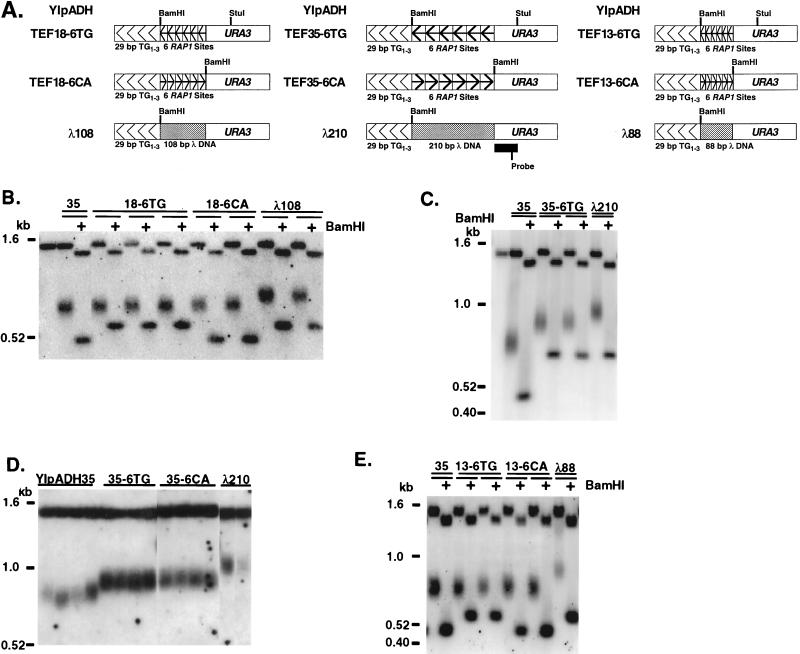FIG. 5.
Cells count one Rap1p molecule as ∼19 bp of TG1-3. (A) Telomere constructions contained either phased arrays of Rap1p sites internal to the 29 bp TG1-3 tract or the same-size fragment of λ DNA. The orientation of the Rap1p site array is indicated by the arrowheads as in Fig. 1. The locations of the BamHI site and the URA3 fragment used to probe the Southern blots are shown. (B) Genomic Southern analysis of telomeres bearing six Rap1p sites spaced one site every 18 bp in strain KR36-6L. DNAs were digested with StuI or StuI plus BamHI and analyzed by Southern blotting using the URA3 probe shown in panel A. Two YIpADHλ108 telomeres were included as negative controls for telomeres bearing inserts of equal size with no Rap1p sites. The leftmost lane of B and C is DNA from the untransformed KR36-6L strain; 35 denotes YIpADH35 (Fig. 1B). (C) Genomic Southern analysis of telomeres bearing six Rap1p sites spaced one site every 35 bp in strain KR36-6L analyzed as for panel B (reprinted from reference 38 with permission). A YIpADHλ210 telomere was included as a negative control for an insert of equal size with no Rap1p sites. (D) Genomic Southern analysis of telomeres in strain KR36-6L bearing six Rap1p sites spaced one site every 35 bp. All DNAs were digested with StuI. All lanes are from the same gel. (E) Genomic Southern analysis of telomeres in strain KR36-6L bearing six Rap1p sites spaced one site every 13 bp. A YIpADHλ88 telomere was included as a negative control for an insert of nearly equal size with no Rap1p sites.

